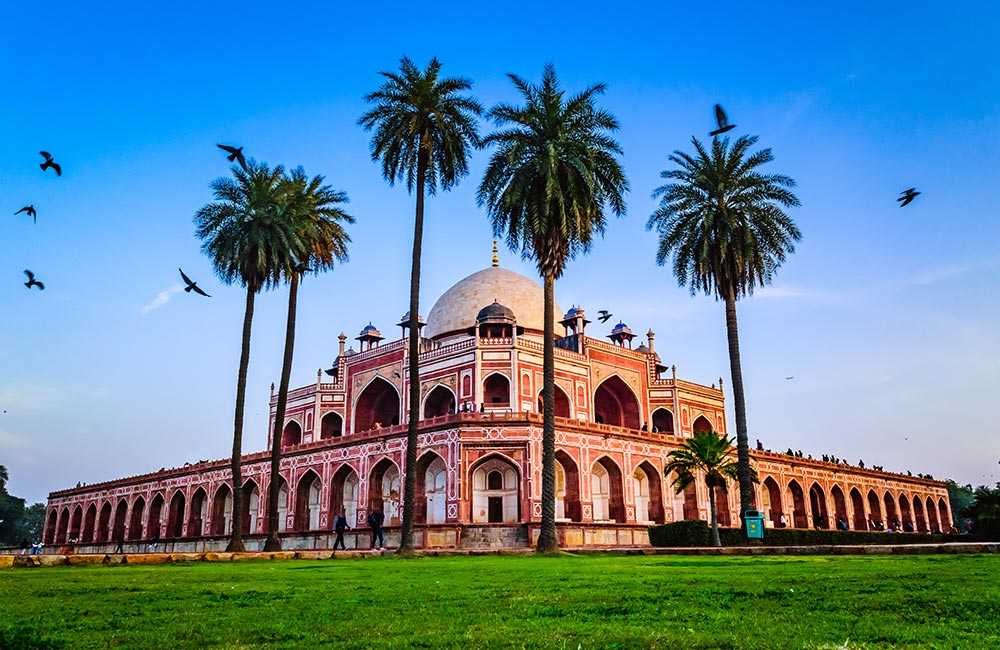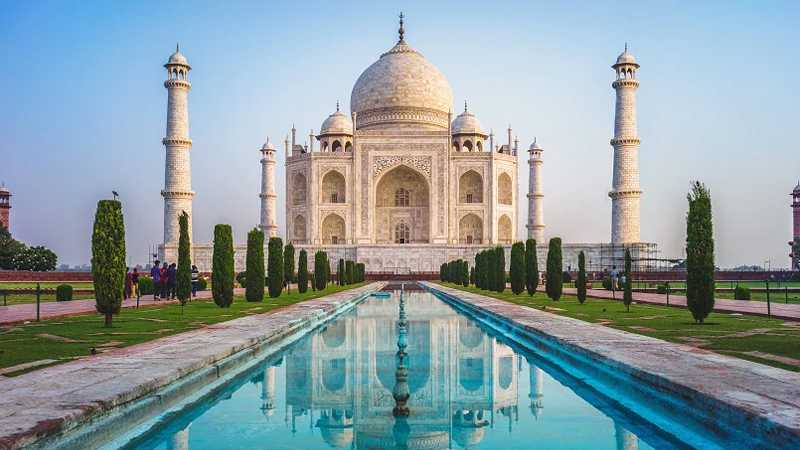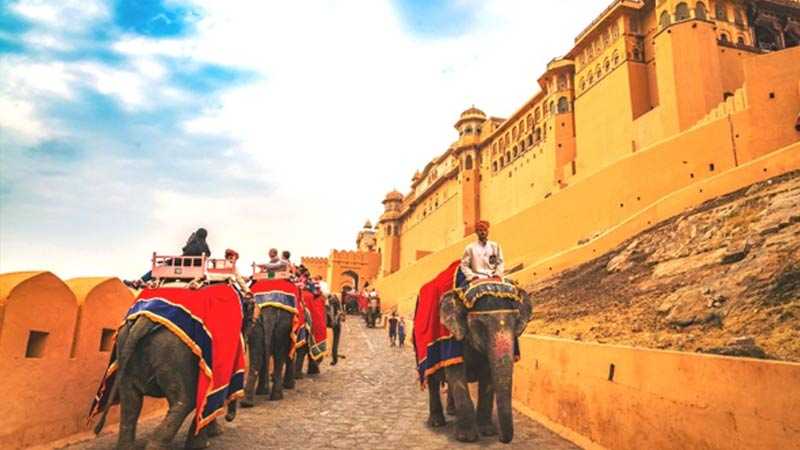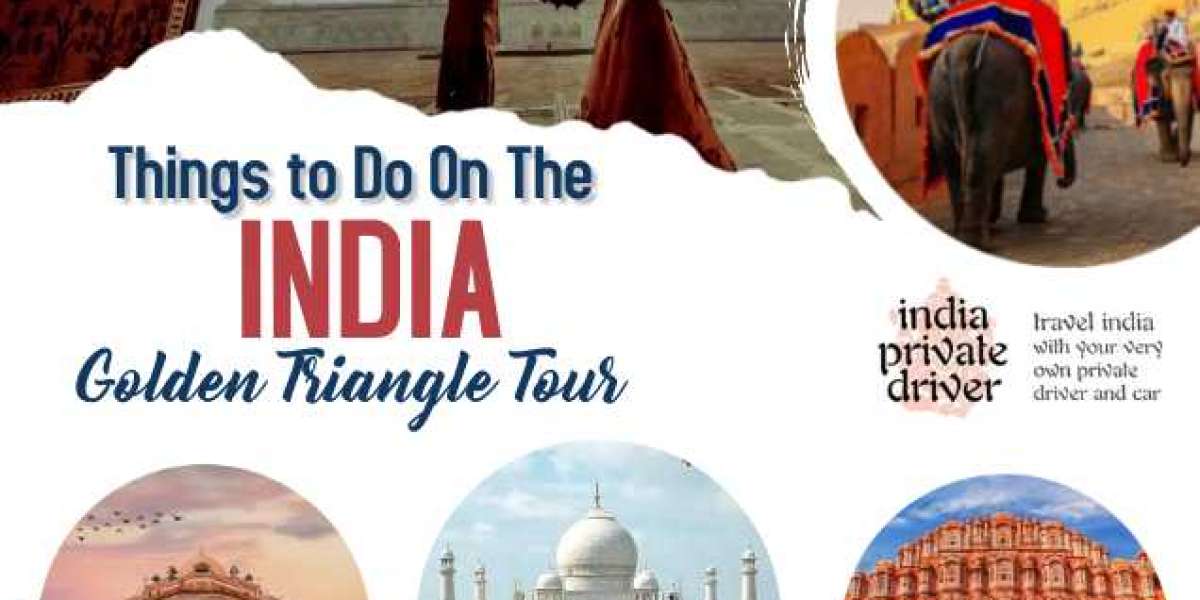
Things to Do On The India Golden Triangle Tour
One of the greatest itineraries for a cultural visit of India is the Golden Triangle, which consists of Delhi, Agra, and Jaipur.
You wouldn't be shocked to learn that Delhi, Agra, and Jaipur have the largest concentration of tourist footprints in India, which is a country with an expanding tourism industry. You could create an imaginary triangle in the middle of the nation if you measured the shortest path between these three locations. Golden Triangle is the result of this. Do you have any previous travel experience to India? The majority of travel companies, including IndiaPrivateDriver, recommend Golden Triangle for an introduction to India.
Travelers may see one of the nation's most interesting architectural wonders, dig into the country's medieval past, and savour delectable foods from physically nearby but culturally distinct locations in India thanks to this special, diversified cultural feast.
Best Time to Visit Golden Triangle Tour India
According to Indian temperature and rainfall, October to April would be the best time to visit the golden triangle in India where the temperature will be between 22-32°C. This 7 months period is perfect for the conditions.
The top suggested Golden Triangle packages are:
Delhi

When it comes to the Golden Triangle, Delhi is the first city to welcome tourists and take them on tours of the Sultanate and Mughal era architecture. Both Old Delhi and New Delhi are included in this city. The Red Fort, India Gate, Akshardham Temple, Lotus Temple, and Qutub Minar are just a few of the city's top attractions
Top Sightseeing Places in Delhi
Red Fort
Red Fort is a massive structure built by Shah Jahan between 1639-1648. It served as the main residence for the Mughal emperors. The architecture of the fort reflects upon the Indo-Islamic and Mughal style
Qutub Minar
Qutub Minar is a UNESCO World Heritage site which was established by Qutub-ud-din Aibak, the founder of Delhi Sultanate, in 1193. It contains spiral staircase and it's design is thought to be based on the Minaret of Jam.
India Gate
India Gate is a war memorial located near the Rajpath. It is dedicated to the soldiers of British India who died in the wars. The India Gate, even though a war memorial, evokes the architectural style.
Humayun's Tomb
It is a UNESCO World Heritage Site and it is the first Garden Tomb of India. The sole purpose of Humayun's wife was to build this tomb after his death. You can either visit Humayun Tomb or Akshardham Temple.
Lotus Temple
Lotus Temple is a magnificent attraction of the city due to the unique flower-like shape. It was built in 1986. It has won many architectural awards and has also been featured in many newspapers and magazines. It has also been declared as the most visited building in the world.
Swaminarayan Akshardham
It is one of the biggest Hindu Temples. It was constructed in 2005 but seems like it has been constructed for over a thousand years because of its architecture. You can either visit Humayun Tomb or Akshardham Temple.
Second City on the Golden Triangle
Agra

There is no need to introduce Agra because it is home to the Taj Mahal, one of the seven wonders of the world. No vacation to India would be complete without a visit to the Taj, which is the country's main attraction and the top reason to travel there. Although overshadowed by the Taj Mahal's reputation, Agra is also home to the magnificent red sandstone Agra Fort. From the Musamman Burj portion, you can also obtain a breathtaking view of the Taj Mahal. It's not necessary to spend the night in Agra because it's a terrific day trip from Delhi, but we do advise doing so because it's worth seeing the Taj at sunrise and sunset.Only the opulent Amar Vilas hotel in Agra offers unbroken views of the Taj Mahal from every room. However, it is expensive for a single night, and it's an indulgence you'll probably never forget!
Taj Mahal
The Taj Mahal is an ivory-white marble mausoleum on the south bank of the Yamuna river in the Indian city of Agra. It was commissioned in 1632 by the Mughal emperor, Shah Jahan, to house the tomb of his favourite wife, Mumtaz Mahal. The tomb is the centrepiece of a 17-hectare complex, which includes a mosque and a guest house, and is set in formal gardens bounded on three sides by a crenellated wall.
Construction of the mausoleum was essentially completed in 1643 but work continued on other phases of the project for another 10 years. The Taj Mahal complex is believed to have been completed in its entirety in 1653 at a cost estimated at the time to be around 32 million rupees, which in 2015 would be approximately 52.8 billion rupees. The construction project employed some 20,000 artisans under the guidance of a board of architects led by the court architect to the emperor, Ustad Ahmad Lahauri.
The Taj Mahal was designated as a UNESCO World Heritage Site in 1983 for being "the jewel of Muslim art in India and one of the universally admired masterpieces of the world's heritage". It is regarded by many as the best example of Mughal architecture and a symbol of India's rich history.
Agra Fort
Jaipur, which was created by Vidyadhar Bhattacharya, is known for being India's first planned city. The capital of Rajasthan, known for its coloured jewels, mixes the attraction of its historic past with all the benefits of a metropolis. The vibrant contemporary city is one of the golden triangle's three points, along with Delhi, Agra, and Jaipur.
Third City on the Golden Triangle
Jaipur

Jaipur, which was created by Vidyadhar Bhattacharya, is known for being India's first planned city. The capital of Rajasthan, known for its coloured jewels, mixes the attraction of its historic past with all the benefits of a metropolis. The vibrant contemporary city is one of the golden triangle's three points, along with Delhi, Agra, and Jaipur.
The Raja of Amber, Jai Singh II, founded Jaipur in 1727, which is when the city first became known as Jaipur. The rapidly expanding population and the escalating water shortage led him to move his capital from Amber to the new metropolis. The city was constructed on the accepted Vastu Shastra principles by renowned architect Vidyadhar Bhattacharya.
Sightseeing in Jaipur
Amber Fort
Amber (pronounced Amer) is at a distance of about 11 kilometres from Jaipur. Now a UNESCO World Heritage Site, it was the bastion of the Kachwahas of Amber, until the capital was moved to the plains, to what is today Jaipur. The palace, located in craggy hills, is a beautiful melange of Hindu and Mughal styles. Raja Man Singh I began construction in 1592 and the palace, which was built as a strong, safe haven against attacking enemies, was completed by Mirja Raja Jai Singh. The contrast between the harsh exterior and the inviting interior couldn’t be more surprising. Made entirely of red sandstone and white marble, visitors are left spellbound by the magnificence of the palace that utilises carvings, precious stones and mirrors. The splendour of the palace is enhanced by the breath-taking vista of the Maota Lake in front. The palace is nearly seven centuries old and has a legendary past. Originally a small structure that the Rajputs won from the Meena tribes, it was later transformed into the grand Amber Palace.
City Palace
Jaipur is not just a palace, yet a royal palace complex developed throughout 1729-32 by Maharaja Sawai Jai Singh II. One more uniqueness of this palace is its architecture, which is a mix of Rajput, Mughal and European styles. Further, Chandra Mahal, as well as Mubarak Mahal (2 most attractive and popular palaces), are a part of this complex.
Hawa Mahal
Hawa Mahal Popularly known to as ‘Hawa Mahal – Palace of the Winds is a fantastic five-storey palace. It was built by Maharaja Sawai Pratap Singh in 1799, and also snuggles the really significance of the Rajputana architecture. The layout of the royal palace is like a beehive castle with great deals of small windows or ‘Jharokhas’ that enable easy passage of air throughout the Mahal.
Nahargarh Fort
Another design of Rajputana structural layout is the Nahargarh Fort. This fortress was originally called as the Sudarshangarh Fort, yet later it was relabeled as Nahargarh that literally indicates the ‘house of tigers’. Better, it was also built by the exact same king who created the City Palace– Maharaja Sawai Jai Singh II.
 " class="wow_main_float_head_img">
" class="wow_main_float_head_img">






